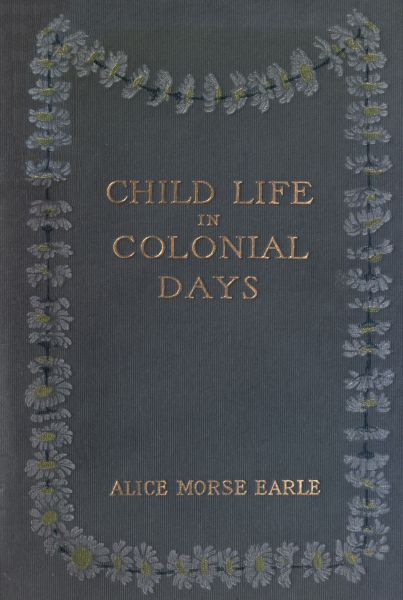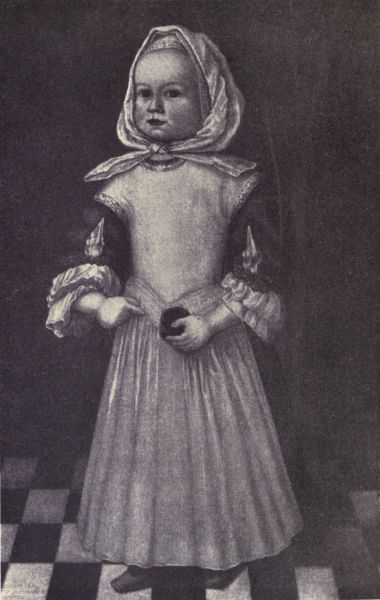
Child Life in Colonial Days
CHILD LIFE
IN COLONIAL DAYS
Written by ALICE MORSE EARLE
author of Home Life in Colonial Days
and other Domestic and Social
Histories of Olden Times
With many Illustrations
from Photographs
MDCCCXCIX
New York
The Macmillan Company
London: Macmillan & Co., Ltd.
1915
All rights reserved
Copyright, 1899,
By THE MACMILLAN COMPANY.
Set up and electrotyped November, 1899. Reprinted December,
1899; March, 1904; February, 1909; March, 1915.
Norwood Press
J. S. Cushing & Co.—Berwick & Smith
Norwood, Mass., U.S.A.
THIS BOOK
HAS BEEN WRITTEN
IN TENDER MEMORY
OF A
DEARLY LOVED AND LOVING CHILD
HENRY EARLE, JUNIOR
MDCCCLXXX-MDCCCXCII
Foreword
When we regard the large share which child studyhas in the interest of the reader and thinker of to-day,it is indeed curious to see how little is told of child lifein history. The ancients made no record of the life ofyoung children; classic Rome furnishes no data forchild study; the Greeks left no child forms in art.The student of original sources of history learns littleabout children in his searches; few in number andcomparatively meagre in quality are the literary remainsthat even refer to them.
We know little of the childhood days of our forbears,and have scant opportunity to make comparisons or noteprogress. The child of colonial days was emphatically"to be seen, not to be heard"—nor was he even to bemuch in evidence to the eye. He was of as littleimportance in domestic, social, or ethical relations ashis childish successor is of great importance to-day; itwas deemed neither courteous, decorous, nor wise tomake him appear of value or note in his own eyes or inthe eyes of his seniors. Hence there was none of thatexhaustive study of the motives, thoughts, and acts of achild which is now rife.
The accounts of oldtime child life gathered for thisbook are wholly unconscious and full of honesty andsimplicity, not only from the attitude of the child, butfrom that of his parents, guardians, and friends. Therecords have been made from affectionate interest, notfrom scientific interest; no profound search has beenmade for motives or significance, but the proof they giveof tenderness and affection in the family are beautifulto read and to know.
The quotations from manuscript letters, records,diaries, and accounts which are here given could onl
